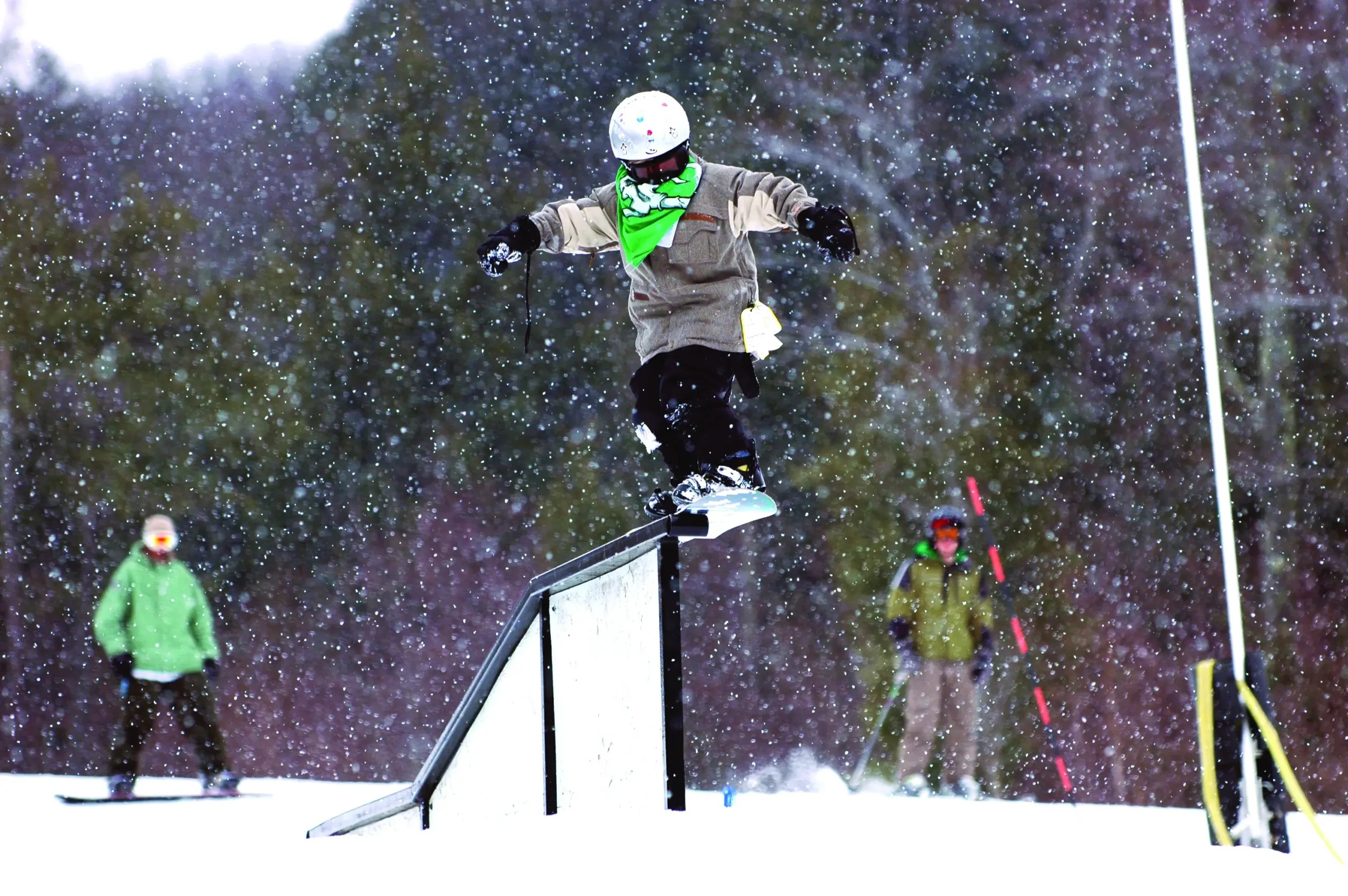To parents who are just a bit skeptical of letting their child start snowboarding, fear not: If you take the right steps in the beginning, you can help ensure that your child has a successful and rewarding experience. Before you give your verdict read on for some good-to-know advice from local experts.
Why Choose Snowboarding As Your Child’s Winter Sport?
Exhilaration. Invigoration. Elation. For many snowboarders, these three words embody the feeling of riding the mountain slopes. With the growing popularity of the Winter X Games and the recent arrival of snowboarding on the Olympic scene, many young people are now itching to start their own trip on the single board.
According to the National Sporting Goods Association (NSGA), 40 percent of snowboarders are between the ages of 12 and 17, and snowboarding was the fastest-growing sport in the nation for three out of five years between 1996 and 2001. Some say the attraction to snowboarding is that it is easier to learn than skiing, while others say the allure lies in the fact that it’s cheaper to buy the starting equipment. I say it must be the tricks.
Watching professional snowboarders like Shaun White and Seth Wescott fly through the air performing backflips and 360-degree spins, it’s not hard to see the sport’s kid appeal-it’s mesmerizing, the mere fact that someone could catapult themselves into midair and miraculously land right-side up with all body parts intact. So it should come as no surprise when your little daredevil starts begging for lessons.
Snowboarding Safety: Waterproof Gear and Beginner Lessons
First, it’s important that your child wears the proper protective gear and outerwear, from head to toes (literally). “It is essential that parents provide their kids with snowboarder-specific socks. Ordinary cotton socks will not work,” says Heather Pinkham, an instructor at Ski Butternut in the Berkshires. In fact, steer clear of any materials made from cotton as the material absorbs moisture and stays wet, preventing wearers from keeping warm. Instead, opt for waterproof materials from which snow will easily slide off. Beyond socks, other musts include waterproof snow pants, jacket, and gloves or mittens, along with lots of warm layers underneath. Equipment, including snowboard, boots, and helmet, can be rented at the ski mountain if you’re not ready to commit to buying your own.
Once your child is properly outfitted, a formal lesson is the best way to go for beginners, suggests Pinkham. “I encourage all beginners to take a lesson…so you can learn the basics and get acclimated to being on the board,” she explains. “Because if you have a bad experience on your own, you are not going to want to do it again.”
Overcoming Fear and Avoiding Potential Injuries
Most beginners do tend to fall a lot, especially on their bottom. Many falls at slow speeds result in little physical harm, with several feet of snow and clothing layers to cushion the blow, but there are some more serious injuries associated with snowboarding. “Common injuries are fractured wrists,” says Pinkham. “People tend to want to break their fall with their hands. Therefore, wrist guards are extremely important.” Falling on the mountain also brings with it the possibility of a concussion, but most head injuries can be prevented with the use of a helmet.
Children who are physically active before they get on the board are less susceptible to injury, and those who participate in another sport that involves balance and coordination will have an easier time getting adjusted to snowboarding. “Kids who have some experience with skating definitely learn how to snowboard faster,” says Connor Dehaan, an instructor at Mount Peter in Warwick.
Dehaan also thinks learning to ski before snowboarding may make the learning process for snowboarding easier, but Pinkham disagrees.
Benefits of Snowboarding
While it can be a tough sport to learn — with beginners spending much of their first few lessons sliding down the mountain on their backsides rather than carving powder like a pro — a child who sticks with it can see many benefits, both physically and mentally.
Pinkham praises the sport for keeping kids physically active during the cold months when they might normally lead a more sedentary lifestyle. “Snowboarding is a unique sport,” adds Dehaan. “You have to use a lot of muscles that you wouldn’t normally engage.”
It is also a confidence builder. Gaining control of the board and mastering how to move down the mountain is no easy feat, but each new skill mastered can boost a child’s confidence and self-esteem levels. And while snowboarding doesn’t have to be a competitive sport, Mount Peter and Ski Butternut, like many other nearby mountains, offer competitions that allow children to show off what they’ve learned and compete for prizes.
The sport has social pay-offs as well, exposing kids to a whole new community. “The kids get a chance to meet new friends and learn how to work with people,” says Pinkham.
















